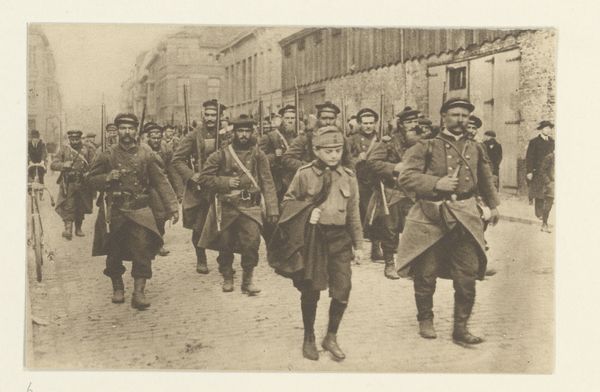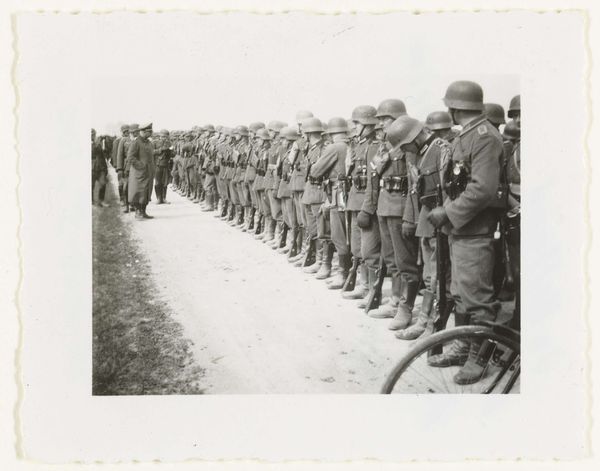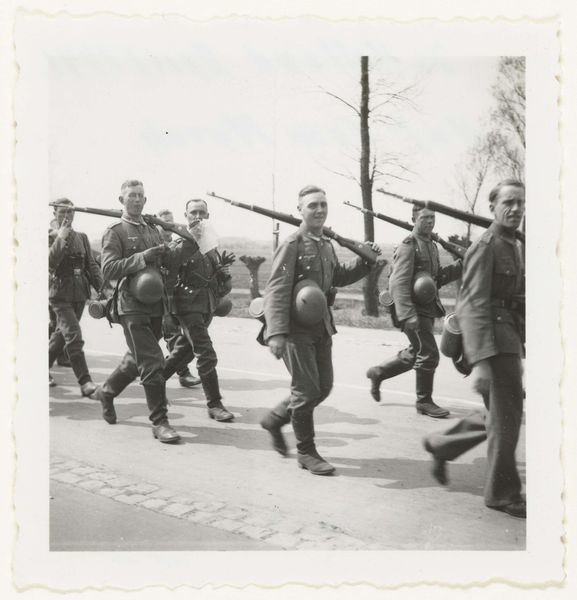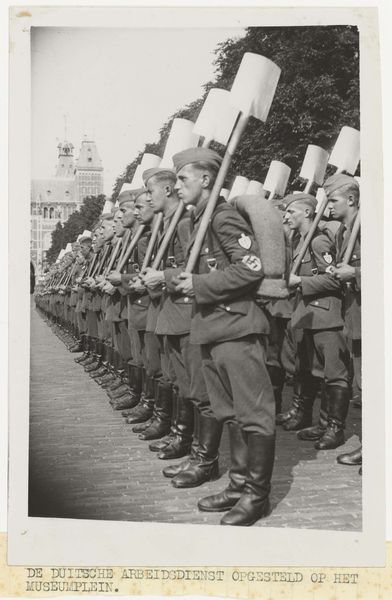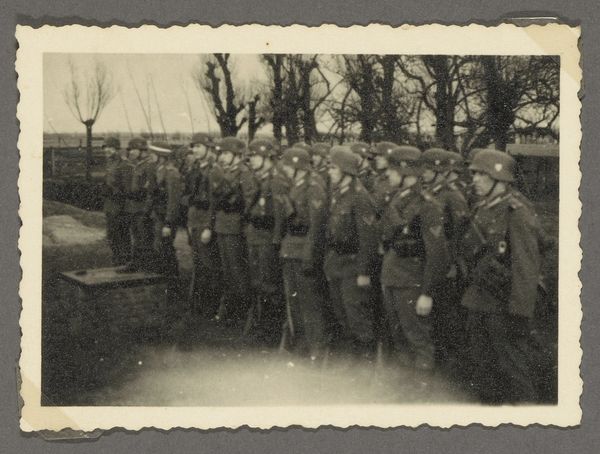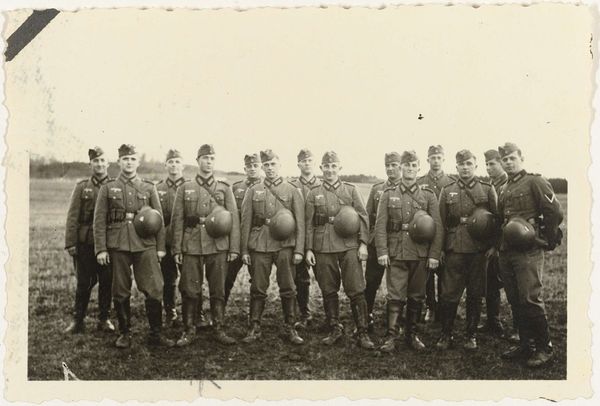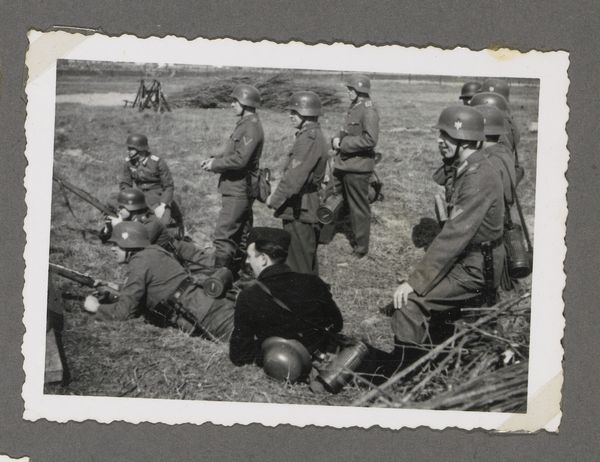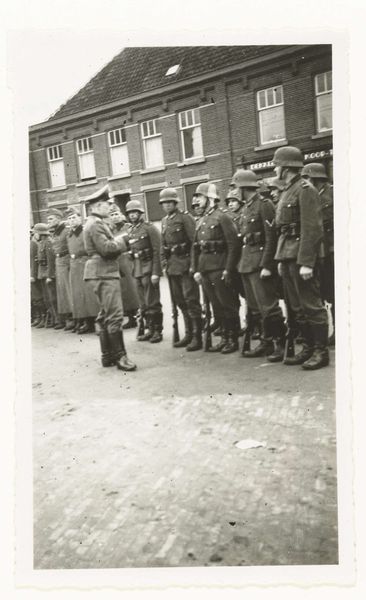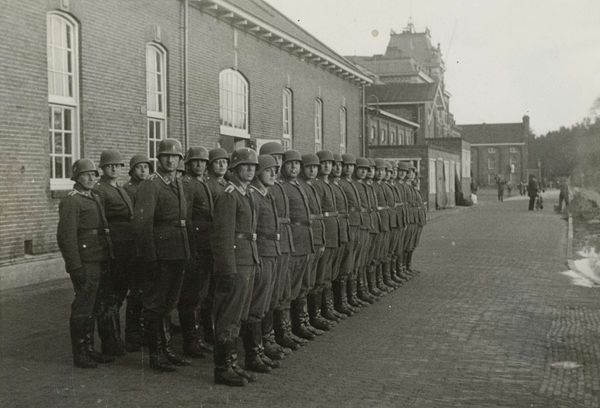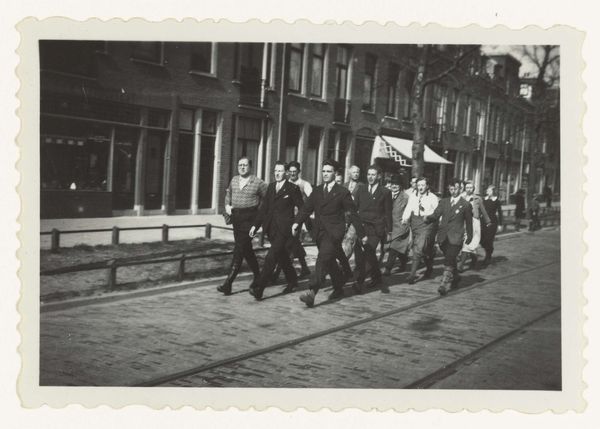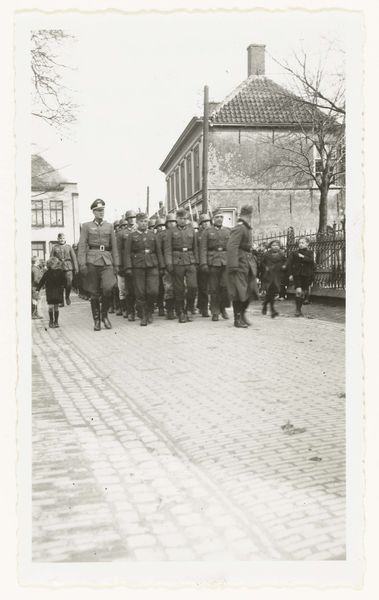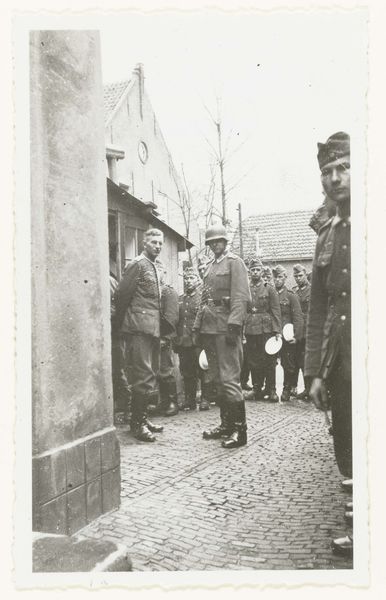
photography, gelatin-silver-print
#
portrait
#
black and white photography
#
landscape
#
outdoor photograph
#
photography
#
group-portraits
#
gelatin-silver-print
#
monochrome photography
#
history-painting
#
realism
#
monochrome
Dimensions: height 60 mm, width 90 mm
Copyright: Rijks Museum: Open Domain
Curator: This arresting gelatin-silver print, titled "Duitse militairen met geweren" or "German Soldiers with Rifles," comes to us from an anonymous artist, and dates roughly from 1940 to 1945. Editor: The bleakness is striking. The low contrast flattens the space, making the line of soldiers seem to stretch endlessly into the mist, almost like a machine churning on and on. Curator: Precisely. Consider the materiality here: gelatin silver, a process enabling mass reproduction, fitting for imagery meant for dissemination, for projecting power. The historical context is undeniable; the Second World War fundamentally reshaped material culture and propagandist imagery. The use of monochrome reduces any kind of life from the people in the image. Editor: Absolutely. Looking at the photograph within the socio-political context of its creation, it prompts unsettling questions. The seemingly endless row speaks to the sheer scale of military involvement, while the relative anonymity of the soldiers shown reduces them to instruments of a larger destructive apparatus. Curator: Further, the anonymous artist complicates our understanding. Were they embedded within the Nazi system? Or were they attempting to document or even subvert that very system? The means of production for the prints must have been enormous to supply images during war and occupation. Editor: Indeed. The public role of the image—to inspire, intimidate, or document—is completely dictated by its historical use and context. This tension, between the individuals portrayed and their representation, is a critical political dynamic in imagery. And as an anonymous photograph, the individual authorship and control has vanished, it has no authorial intervention. Curator: The level of control in war-time manufacturing, of both materials and perceptions, cannot be overstated. The photographer might be trying to remind us of their presence in occupied territories, creating this stark landscape, made alien by the occupation. Editor: What I’m left with is an even stronger sense of the photo's complex role. Both as an immediate recorder of events and a longer-term historical object, ripe for evolving reinterpretation. Curator: It becomes a haunting reflection on power, material, and memory. One image holding so much information, ready for consumption and questioning.
Comments
No comments
Be the first to comment and join the conversation on the ultimate creative platform.
